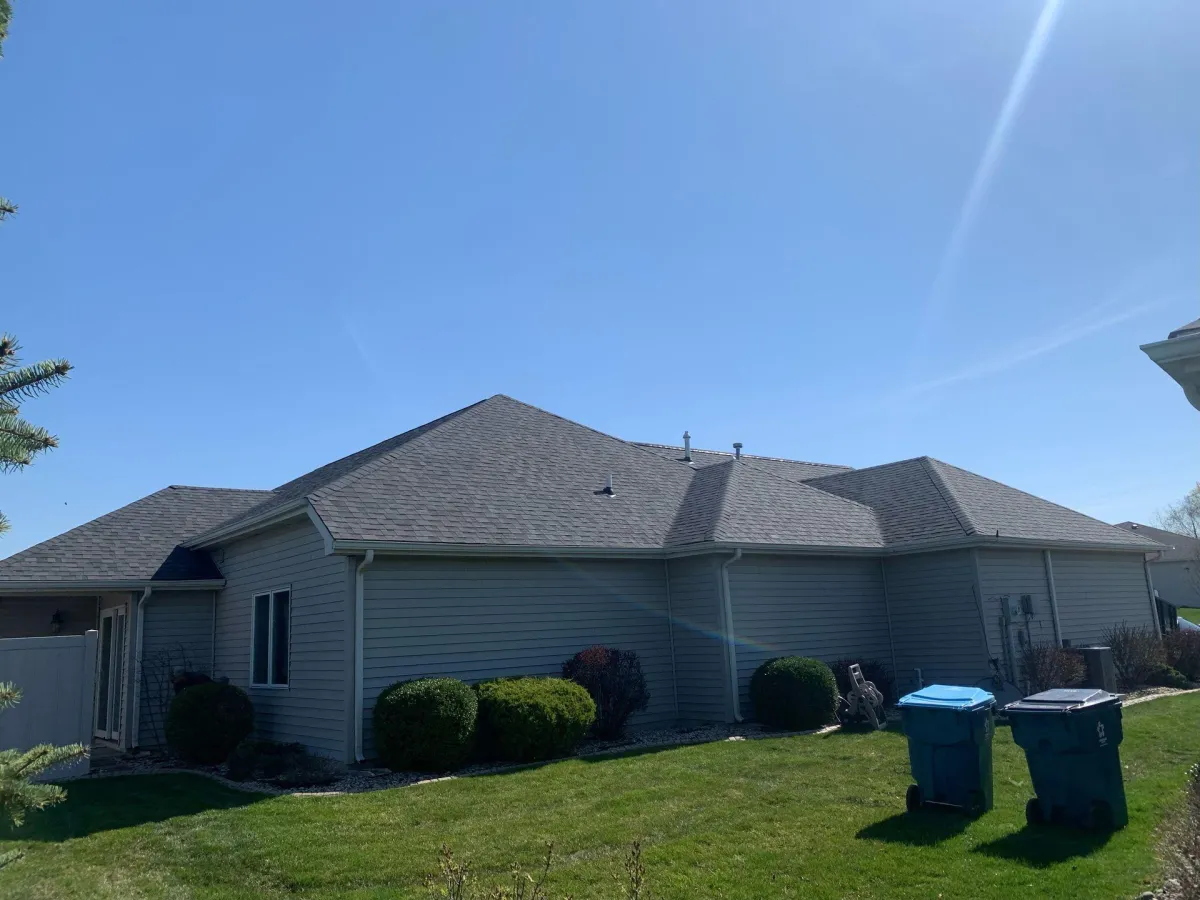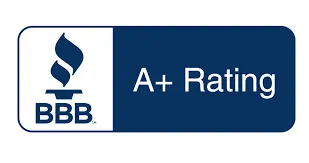SERVING FORT WAYNE AND SURROUNDING AREA

News & Insights

Top 9 Questions Answered About Installing Vinyl Siding
Top 9 Questions Answered About Installing Vinyl Siding
Installing vinyl siding can seem like an impossible decision, but with the right information at hand, it's a project you can tackle with confidence. In this blog, we will answer some of the most common questions people have about vinyl siding to help you make informed decisions. Whether you're considering a DIY approach or hiring a professional, we've got the answers you need to navigate through the installation process smoothly.

1. What is Vinyl Siding and Why Choose It?
Vinyl siding is a popular exterior cladding material made from polyvinyl chloride (PVC). It serves not only as a protective barrier against the elements but also enhances the aesthetic appeal of homes. One of the main reasons homeowners choose vinyl siding is its versatility. Available in a myriad of colors and styles—from traditional lap siding to modern vertical panels—vinyl siding offers lots of options to fit various architectural preferences. Additionally, its low maintenance requirements make it a favorable choice for those who wish to enhance their home’s appearance without committing to extensive upkeep.
Another advantage of vinyl siding is its affordability. Compared to other materials like wood or brick, vinyl siding comes at a significantly lower price point. This cost-effectiveness doesn't sacrifice quality, which is why many individuals consider it an excellent long-term investment. Furthermore, vinyl siding is resistant to fading, cracking, and weather damage, ensuring that your home retains its stunning look for years. With a lifespan of approximately 20 to 40 years, it certainly provides long-term value and peace of mind for homeowners.
2. How Do I Prepare My Home for Vinyl Siding Installation?
Prepping your home for vinyl siding installation is essential for ensuring a seamless and effective process. Start by assessing the current condition of your exterior walls. Remove any existing siding or debris, and make necessary repairs to the underlying structure. This could include fixing water damage, sealing gaps, or ensuring that the wall is free of mold and rot. Addressing these issues beforehand will prevent problems arising after the new vinyl siding is installed.
Another crucial step is to ensure that your home’s measurements are accurate. This will help you determine how much vinyl siding and insulation materials you need to purchase. Having precise dimensions will not only save you money but also avoid any frustrating delays. Additionally, consider if you need to install or upgrade insulation. Insulated vinyl siding can improve your home's energy efficiency, helping to lower energy bills in the long run.
3. Can I Install Vinyl Siding Myself?
Installing vinyl siding is a feasible DIY project for many homeowners, provided they have the right tools and a bit of handyman know-how. If you're comfortable working with tools, the average homeowner can successfully tackle a vinyl siding installation. This task allows you to save on labor costs, making it a budget-friendly option. However, it's important to weigh your skills honestly—complex installations might still require the expertise of a professional.
If you choose to go the DIY route, invest time in researching best practices. Many online resources and tutorials provide step-by-step guidance, making this task more approachable. You'll need to familiarize yourself with the installation techniques, such as correctly aligning the panels and securely fastening them to the substrate. Keep in mind that thorough planning and preparation can make all the difference, so take your time to ensure you're well-equipped for the job.
4. What Tools and Materials Do I Need?
When preparing to install vinyl siding, having the right tools and materials is vital. Start with the essentials: a measuring tape, level, chalk line, utility knife, and siding nailer or hammer. Additionally, you'll need various accessories like starter strips, J-channels, and corner posts to create a finished look. Many homeowners overlook these critical components, but they play a significant role in achieving a professional appearance and ensuring durability.
Don't forget to invest in safety gear as well, including gloves and goggles, to safeguard yourself during the installation. Choosing high-quality vinyl siding materials can also make a dramatic difference in the longevity and effectiveness of your home’s exterior protection. Always check for the manufacturer's specifications when purchasing supplies to ensure everything aligns properly. Adequate preparation in gathering your tools and materials will set the stage for a successful siding project.
5. How Long Does Vinyl Siding Installation Take?
The duration of a vinyl siding installation project can vary significantly based on several factors, including the size of your home and your level of experience. For a DIY enthusiast, a standard installation of one to two weeks might be required. If you're working alone, expect a longer timeframe. Conversely, hiring a professional team can dramatically reduce this timeline to just a few days, depending on crew efficiency and weather conditions.
Keep in mind that preparation is key to a faster turnaround. If your home is in good condition and you’ve completed the preparatory work ahead of time, the installation itself can be a relatively swift process. Additionally, remember to factor in any customizations or unique architectural features that might take extra time. Planning ahead will help you set realistic expectations and minimize any disruptions during the process.
6. What Are the Costs Involved in Installing Vinyl Siding?
The cost of installing vinyl siding can range widely, influenced by several factors such as material quality, home size, and whether you choose to DIY or hire professionals. On average, homeowners can expect to pay between $3 to $8 per square foot for materials, with added expenses for insulation and accessories potentially increasing that figure. If hiring a contractor, labor costs may double the total price, so it's wise to gather multiple quotes from reputable local contractors.
In addition to upfront costs, remember to consider long-term savings. Choosing high-quality vinyl siding may come with a higher initial price tag but often results in less maintenance and improved energy efficiency. This means that what you invest upfront can lead to savings on maintenance and utility bills over the years. By assessing both immediate expenses and long-term value, you'll be better equipped to make a decision that suits your financial goals.
7. How Do I Maintain My Vinyl Siding?
One of the major perks of vinyl siding is its low maintenance requirements. However, regular upkeep can extend the life of your siding and keep your home looking sharp. A simple twice-a-year cleaning with soap and water, along with a gentle scrub brush or soft cloth, is typically sufficient to remove dirt and grime. For tougher stains or mildew, a mixture of vinegar and water can help rejuvenate the siding without damaging its surface.
It's also important to inspect your vinyl siding for damage periodically. Look for cracks, loose panels, or any signs of wear and tear. If you notice any issues, it's best to address them promptly to prevent further complications. Regular maintenance can significantly enhance the lifespan of your siding, allowing you to enjoy its benefits for years to come.
8. Is Vinyl Siding Eco-Friendly?
When considering the environmental impact of home improvements, vinyl siding carries certain advantages. Made from PVC, vinyl siding is recyclable and comes in a variety of options that reduce energy consumption. Many manufacturers offer eco-friendly products that contribute to energy savings, helping to lower your home’s carbon footprint.
Moreover, the energy efficiency of insulated vinyl siding can lead to improved home comfort while reducing reliance on heating and cooling systems. This double benefit can mean lower utility bills and a smaller environmental impact over time. Collaborating with manufacturers that prioritize sustainable practices can also improve the eco-credibility of your home. So, when choosing your siding, look for certifications that demonstrate commitment to eco-friendly production methods.
9. What Should I Look for When Hiring a Vinyl Siding Contractor?
Hiring the right contractor for vinyl siding installation is crucial for ensuring a successful project. Start by looking for professionals with extensive experience and positive customer reviews. Ask for references and their past project samples to evaluate their work quality. An experienced contractor should be able to provide insights that align with your vision and requirements.
It's also essential to verify that the contractor is licensed and insured. This protects you from potential liability in case of accidents during the installation process. Always request multiple quotes to compare prices, but don’t make a decision based solely on cost. Consider the value and quality offered, including warranty options on the materials and labor. By taking your time to find a reputable contractor, you can ensure that your vinyl siding installation meets your expectations.
Ready to upgrade your home with durable vinyl siding?
Whether you're curious about costs, durability, or the installation process, we've got you covered. Don't wait—give your home the protection and style it deserves today! Click the link to get started!
Get Your Free Estimate Now and Start Transforming Your Space Today!
